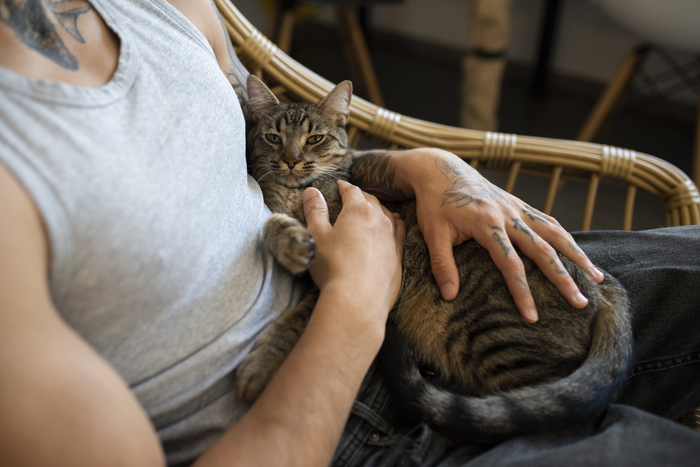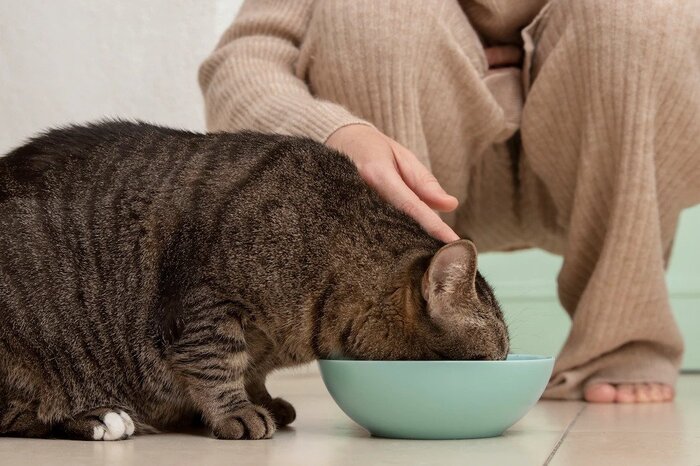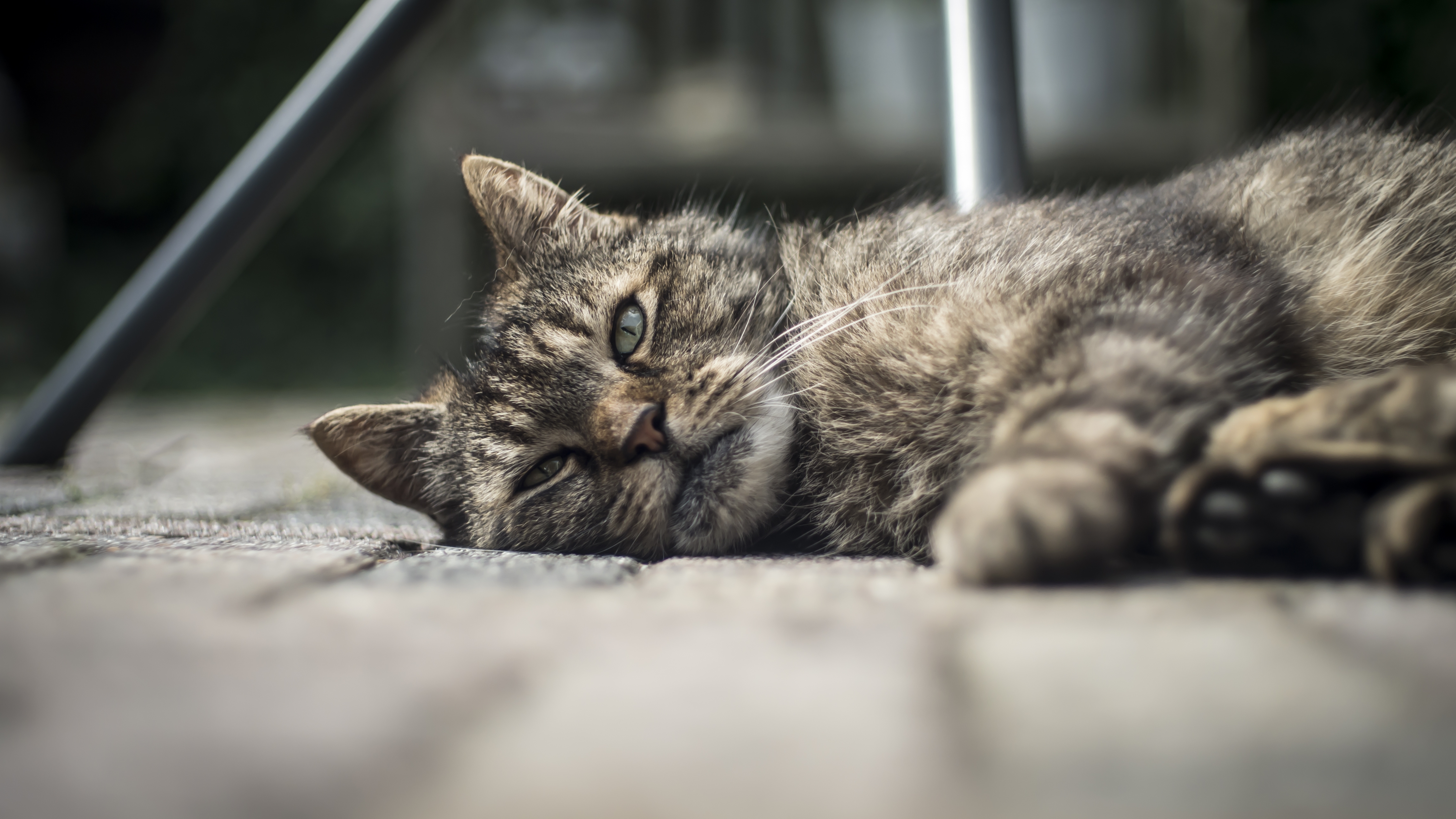
The process of aging in both humans and animals is associated not only with changes in physical health (sometimes also in mental health) but with behavioral modifications as well. The energy level of our beloved pets and their motivation to engage in activities like playing, running around, jumping, scratching...etc., gradually decreases. These behavioral changes are normal, and we can not do anything about them. However, sometimes they are a result of an underlying health condition and may indicate that our pets are in pain.
Today we will provide tips to cat owners, on how to recognize that their feline friends might be in pain, based on behavioral changes.
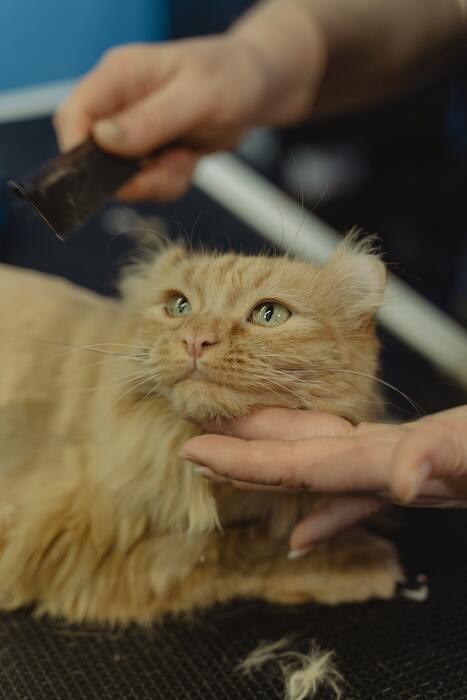
Changes in the Grooming Habits
Cats are well-known for their impeccable grooming habits. You may have noticed that cats spend a lot of time during the day “cleaning” themselves through licking. If you notice that your feline friend has stopped to pay attention to his/her self-care and there are even matted parts of his/her fur, this might be a sign of an underlying health condition.
Osteoarthritis (OS) is a common health condition in aging cats, which is accompanied by painful physical modifications. 90% of cats who are older than 10 years are affected by this illness.
If your cat seems to have neglected his/her self-care, this is likely to be caused by spinal arthritis, namely the pain and discomfort it leads to. Your paw friend may have difficulty reaching all areas of his/her body, especially those on the pelvis, lower back, and upper rear legs.
->What to Do
If you notice that your cat’s appearance has become shabby, and there is matted fur, you should contact a veterinarian as soon as possible.
You can also help your feline friend keep him/herself maintained by regularly grooming him/her and getting any tangles and knots out of his/her fur. A further step towards helping your cat groom him/herself is getting him/her to have the so-called “lion cut”. The idea of this cut is to make the fur on the torso area short, thus easier to maintain. However, you should consult a veterinarian prior to taking action. Do not cut your cat’s fur at home.
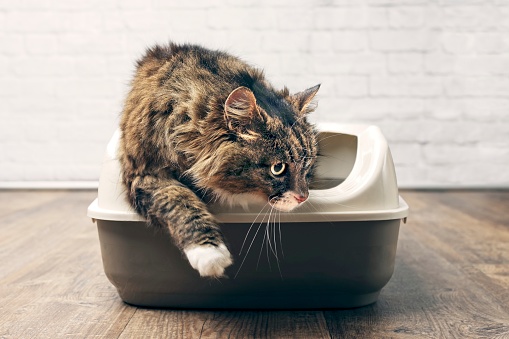
Changes in the Use of a Litter Box
How tidy and neat cats are, can be noticed not only in their grooming habits but also in the use of a litter box. Unlike dogs, cats do not need to be taught where to relieve themselves. They have a natural instinct to use a litter box. Of course, there can always be deviations from this behavior, i.e. if abrupt changes in the environment took place. Once you have excluded all environmental factors as a possible reason for your cat’s behavior, i.e. However, generally speaking, your cat should not have problems using a litter box.
If your feline friend is already a senior and of a sudden, he/she stopped using his/her litter box, this might be caused by discomfort or pain in the hip or lower back area. Covered litter boxes can cause an even bigger discomfort as they get in touch with the cat’s back. It is common for cats in such situations to relieve themselves outside the litter box. They can choose another spot in the same room where the litter box is or a completely different area at home.
Also, you may notice that your cat has changed the position he/she typically takes when relieving him/herself. If your cat stopped squatting and started taking a standing position, this might indicate, that he/she is in pain. As a result, he/she is not likely to properly relieve him/herself in the litter tray and the urine may go outside and reach the floor.
->What to Do
Similarly to the previous point, you should consult a veterinarian immediately. Further steps you can take are switching the litter box with a lower-sided one that does not have a cover. Also, you may want to consider relocating the litter box to a place, that is easier to access. For example, if your cat has to climb stairs or jump above any objects that obstruct the way to his/her litter box, he/she is likely to refuse to use it when he/she is in pain.
Changes in Your Cat’s Demeanor and Tolerance to Human Contact
We all will agree that every cat has his/her own personality and temperament. While some cats are very friendly and people-oriented, others do not tolerate physical contact and sharing their living space with other species, sometimes with other cats as well. Owners know their paw friends and what their disposition typically is. If your kitty used to seek your attention to be hugged, or petted, but he/she has abruptly changed this behavior, this might be caused by an underlying health condition. Should your cat no longer tolerate being picked up, touched, petted, and even hide or show signs of aggression in the presence of visitors, this would be a clear sign of discomfort and/or pain your feline friend may feel.
->What to Do
As you may already know, the best thing to do is to consult a veterinarian. Also, you should not force your cat in any case to have physical contact with you or family members. Be extremely gentle and considerate when approaching your cat and don’t let your family members or friends handle him/her roughly (or at all).
Changes in the Posture While Eating
Getting into a lying position to eat/drink clearly indicates that your cat is not feeling comfortable standing or sitting. This might be related to Arthritis or other joint problems.
->What to Do
Try to provide your cat with a food/water bowl that he/she will feel comfortable using. This could mean switching the bowl with a slightly raised one, that is closer to their mouth.
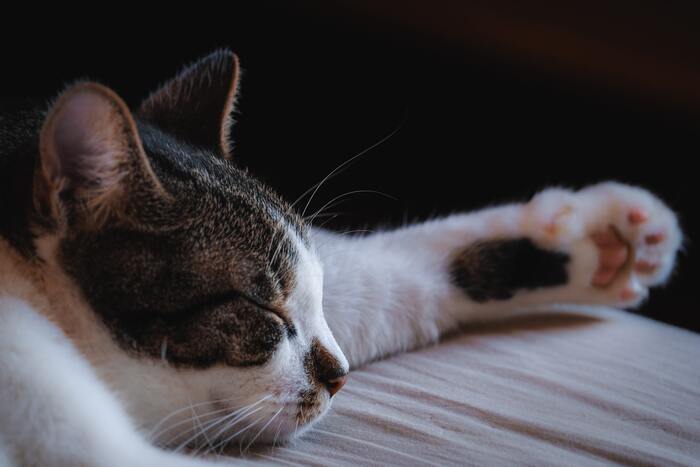
Changes in Your Cat’s Energy Level
As mentioned at the beginning of the article, decreased energy levels are quite normal for aging animals. However, if you notice that your cat spends most of the time in one spot and refuses to play, and move at all, this is likely to be a sign of a health issue.
->What to Do
Besides bringing your cat for a veterinary check, you can try to provide comfort for your paw friend as much as possible. Your cat will be pleased to have cozy, soft, and plush items added to his/her sleeping area. Also, you should make sure that there are no items around your cat’s sleeping area, that may cause discomfort, i.e. obstruct the way to his/her sleeping spot, are sharp or not stable (if he/she likes sleeping in a closet/cupboard).

